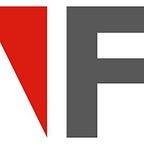Building for Green Tenant Improvements
Sustainability in Tenant Improvement
The needs and elements that go into a tenant improvement project involve taking many details into consideration and customizing multiple tenants’ spaces to their specific needs, resulting in multiple types of improvements for one building. Design build is a common method for contracting these types of projects, where designers and builders work together to create a streamlined communication. Tenant improvement projects that are “green” follow similar guidelines, while offering improved efficiency and less environmental impact. The construction process can be made sustainable in many ways, from waste reduction to carbon emissions.
Materials and Resources
Selecting materials that are manufactured sustainably or materials that have been reused and salvaged from a previous use conserves natural resources, frequently with no additional cost. Sustainable materials are often more durable, and can also contribute to an aesthetically pleasing space for the tenant.
In addition to choosing sustainable materials, establishing recycling procedures for construction and demolition waste are vital to green tenant improvement construction. Additionally, addressing future occupant waste, diverting construction waste, and reusing materials or furnishings are small details that elevate the quality of tenant improvement construction.
Energy and Atmosphere
A number of components within tenant improvement construction affect energy consumption over time. In addition to design and construction best-practices, tenant equipment selection can contribute to a high-performance work space.
There are many aspects and recommendations to help reduce energy consumption and costs, while simultaneously providing a comfortable working environment for occupants. For example, reduction in lighting
power and achieving a minimum energy performance both create positive environments post-construction and also contribute to a sustainable project.
Commissioning
Commissioning is the process of verifying new construction. Fundamental commissioning is a prerequisite for LEED certification and all LEED targeted projects. Enhanced commissioning can add value for large tenant improvement projects that involve complex systems.
The larger the size of the construction in relation to the size of the building, the more important and valuable commissioning is, especially where complex systems are being installed, such as HVAC systems. With this, engaging a designated commissioning authority for all the systems is extremely beneficial to the project and the ease of the process.
The Construction Process
Design-build contractors or construction managers, such as Firmo construction, will be able to address the costs of design, permitting and construction and tailor them to the owner’s needs. Once the business owner has a conceptual idea and approves the project costs, design and development can move into permitting.
During the design development and permitting process, costs are updated as plans are developed to validate the design. Costs and design remain consistent with the original budget estimates and accommodates changes. The owners then have the opportunity to adjust the project financial expectations as needed. By the time construction is ready to begin, a final construction cost is firmly established for all the tenants.
LEED and Efficiency
Multiple factors go into the development of a sustainably-oriented tenant improvement project. There are specific guidelines such as water use reductions, minimized energy use, sustainable designs, and quality construction features that all come together to create a green or LEED targeted tenant improvement project.
